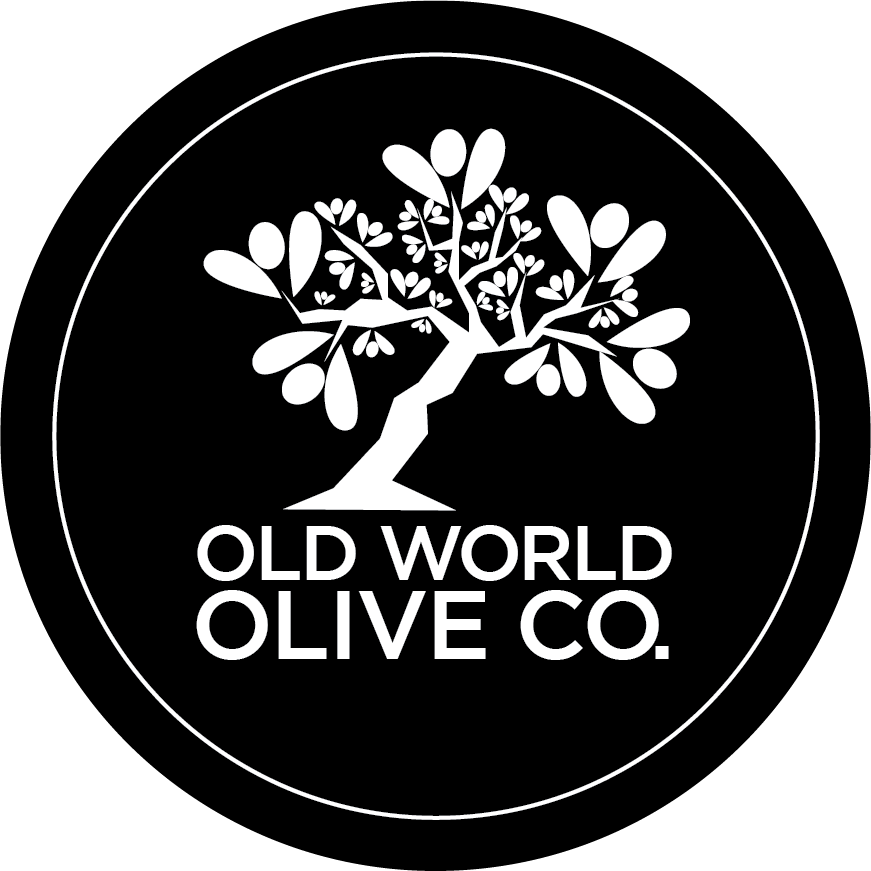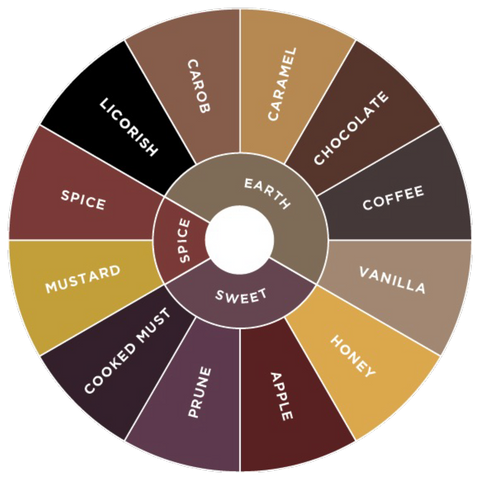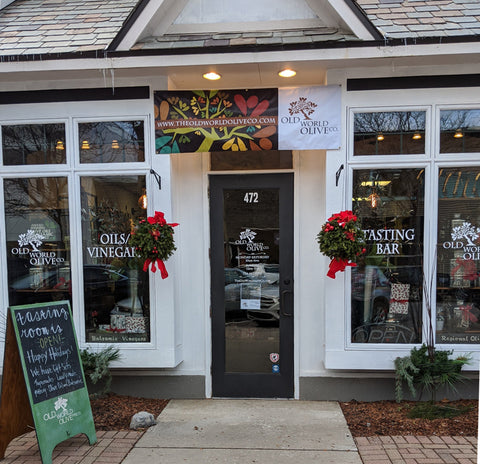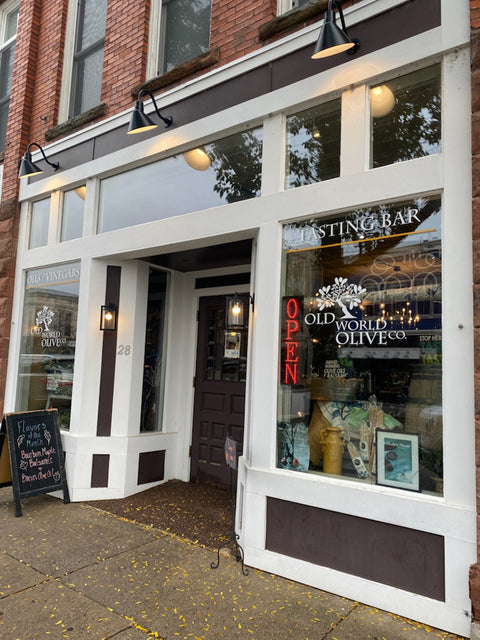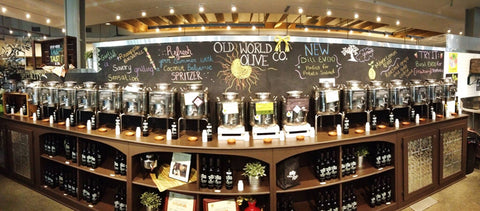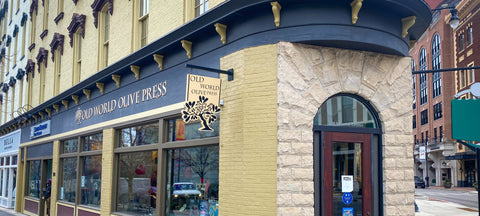What is Balsamic Vinegar?
Balsamic vinegars, which are made from wine grapes, are known for their balanced sweet and tart taste, deep color and complex aromas. They are also typically known for the maturation process they undergo. Balsamic vinegars date back to the early Middle Ages (or, according to some historians, Ancient Roman times) and are an important part of the culinary history of Modena and Reggio Emilia, the Italian provinces where the finest balsamic vinegars are still made. The Italian word balsamico derives from a word that means soothing, healing and, more generally, good for health. In the 19th century, balsamic vinegar was an important part of a woman’s wedding dowry—so much so that families would start aging a batch as soon as a daughter was born.
Balsamic vinegars are made from grape must (a mixture of juice, skin, and seeds), which is slow-cooked to produce a highly concentrated liquid. Typically, the more viscous the balsamic vinegar, the higher quality (and more expensive) it is.
In the 1980s, white balsamic vinegars were introduced, which are a blend of grape must and vinegars from various sources.
Sources: Balsamic Vinegars, by Paolo Giudici, Federico Lemmetti & Stefano Mazza; Acid Trip: Travels in the World of Vinegar, by Michael Harlan Turkell
What is the Shelf Life of Balsamic Vinegar?
For peak freshness and flavor, it’s best to use our Balsamic Vinegars (both white and dark) within approximately three years. Fruit vinegars containing fruit puree (with its water content removed) maintain their exceptional taste for roughly 18 months before the fruit begins to oxidize. Our apple cider vinegar and wine vinegars can be stored indefinitely with no negative impact on quality. Shelf life is a function of determining the highest quality aromas, flavors and overall quality. Remember: vinegar does not spoil, but it does lose some of its aromatic attributes and its color may change due to exposure to air and light over time. There’s no need to refrigerate vinegar, it can be kept at room temperature.
Local Designations, Heritage Techniques, and Quality Control
Certain types of vinegar are classified according to where they were made and under what conditions. When it comes to balsamic vinegar, there are four main categories. Generic balsamic vinegar, which has no recognized geographic origin, and must only comply with general vinegar regulations, which vary from country to country. Balsamic vinegar with protected geographical indication (PGI), such as balsamic vinegar of Modena, must contain at least 10% wine vinegar, a small amount of vinegar aged 10 years, and be aged in wooden barrels, casks or vats for at least 60 days. The production process must take place within the Italian province of Modena (Reggio Emilia also has a PGI, with similar designations).
Balsamic condiments with protected designation of origin (PDO) have the strictest qualifications, much like fine wines. Traditional balsamic vinegar of Modena or Reggio Emilia must contain only cooked grape must and have been matured for at least 12 years before bottling. These vinegars are evaluated by trained tasting panels before they can be labeled with this name, and are further qualified into either affinato and extravecchio levels (in Modena) or aragosta, argento, and oro (in Reggio Emilia).
Professional tasters evaluate balsamic vinegar using three types of tests: the olfactory test, to sample aromas and pungency; the gustatory-olfactory test,which tests for viscosity, sweetness, acidity, astringency, bitterness and saltiness; and the visual test, which looks at clarity, color, gloss and viscosity.
The professional tasters on these panels are looking for 24 sensory attributes of traditional balsamic vinegar, referring to four macro-categories (appearance, aroma, taste, and trigeminal sensations) and tasting notes of carav mel, cooked must, dried prune, honey, apple, licorice, vanilla, mustard, carob, spices, coffee, and chocolate. Other frequently used descriptors regard the four consolidated tastes: sweet, sour, bitter, and salty, the tactile perception of viscosity, and the three trigeminal sensations of pungency, spiciness, and astringency.
The Facts About Balsamic Vinegar
Less than 30,000 liters of traditional balsamic vinegar are made in Italy every year, making it quite rare and totally unavailable to purchase in any large quantity—it’s a precious substance, to be used very sparingly. Each of these tiny Tradizionale bottles (think the size of a shampoo bottle you can take in a carry-on bag) retails for $100 or more — an impossibility for the home cook and connoisseur who wants to reap the health benefits and taste of delicious balsamic vinegar on a daily basis. These vinegars are made entirely with grape must and fermented over at least 12 years with bacteria, slowly evaporating and reducing in large, space-consuming barrels. These deep, complex, syrupy vinegars are to be used sparingly—more as an occasional treat than as an everyday ingredient.
Health Benefits of Balsamic Vinegar
Vinegar is a natural antiseptic that has been used in traditional remedies for millennia. Some small studies have shown that consuming balsamic vinegar can help regulate blood sugar, cholesterol and insulin levels. It also contains powerful antioxidants called polyphenols, which can help boost circulation, and antioxidants, which can reduce your risk of cancer. Acetic acid, one of the components of balsamic vinegar, contains probiotic bacteria that can help support digestion and immunity.
Seasons vinegars are made from cooked grape must and wine vinegar for acetification. They contain natural fruit sugars, but home cooks usually use them in such small quantities that a few spoonfuls won’t make or break the healthfulness of most dishes. That sweetness also comes with all the complexity and organoleptics of the fruit from which it came—and we all know that enjoying your food is an important part of enjoying and looking forward to cooking for a healthy lifestyle.
